#dinosaur colorado
Text

Abandoned motel on US 40, Colorado, August 2012
#abandoned#abandoned motels#colorado#american west#americana#dinosaur colorado#wiley's motor court#photographers on tumblr#original photography#lumix dmc-fz28#2012#bruce sharp
6 notes
·
View notes
Text
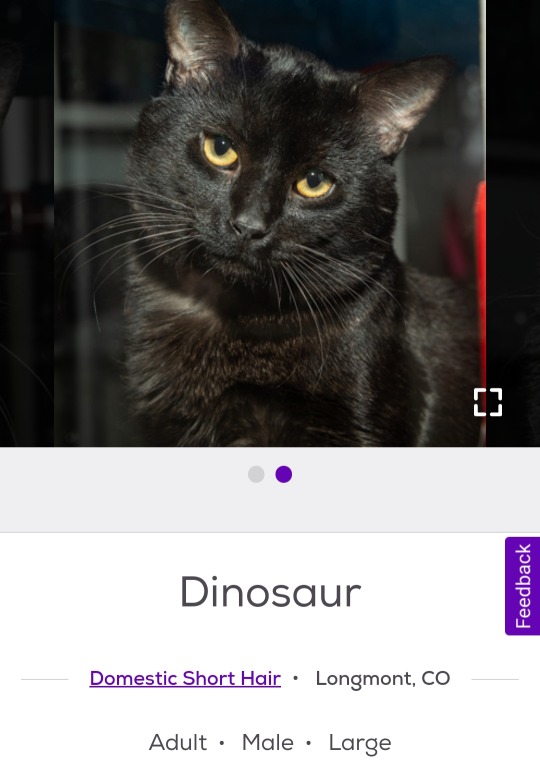
557 notes
·
View notes
Text

A Triceratops model at the Dinosaur Journey Museum in Mesa County, Colorado 🦖
101 notes
·
View notes
Text

Oooorrraaarrooo
42 notes
·
View notes
Text
Holidays Really Throw Me Off.
Seriously, all day yesterday I thought it was Tuesday. I am a day behind! So, I guess you get two posts today! One this morning and one this evening! Woohoo!

Anyway, Wordplay Wednesday is about the word "formation." This is a common word used by geologists and paleontologists. It id a body of rock having a consistent set of physical characteristics that distinguishes it from adjacent rock.

For example, this is an outcrop in eastern Dinosaur National Monument. The red rock below the yellow line is the fine-grained sandstone, siltstone and mudstone of the Chinle Formation. The paler rock above the yellow line is the transitional sands and muds of the Bell Springs Formation. You can physically see the differences between the two formations.

Here's an outcrop in Irish Canyon in northwestern Colorado. Below the blue line is the deep, rich red of the Precambrian Lodore Formation. Above is the pale Mississipian Madison Limestone. Again, the formations can be seen without much difficulty.
Formations are defined by lithology alone. LIthology includes the chemical and mineral compositions, texture, color, primary depositional structures, fossils or other organics like coal. They must be able to be delineated at the scale of geologic mapping for a region.

They may range from less than a meter to several thousand meters.

They are typically named after a permanent natural or artificial feature near where it was first described.
For example: The Morrison Formation was named after Morrison, Colorado.

This formation is composed of mudstone, sandstone, siltstone, and limestone and comes in an array of colors, generally light gray, greenish-gray, and red.
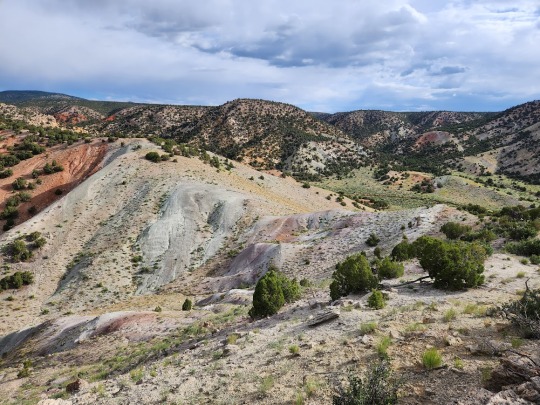
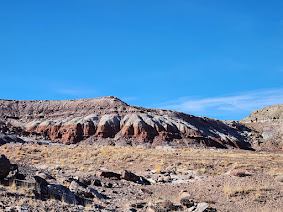
It is up to 200 m thick at it's thickest and plum full of dinosaur bones, petrified wood, ash and even uranium.
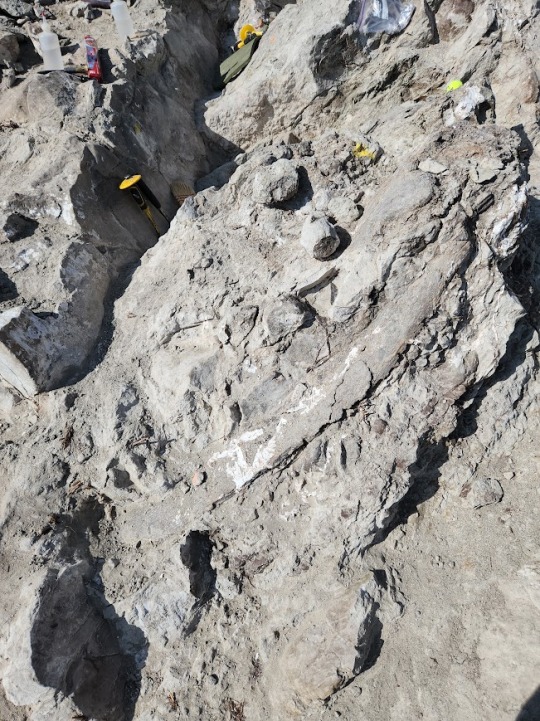
Brachiosaurus rib, Evil Tree Bonebed, Salt Wash Member, northwestern Colorado

Diplodocid dorsal vert, Brushy Basin Member, San Rafael Swell Utah

uranium-filled Diplodocus leg, Brushy Basin, northwestern Colorado
12 notes
·
View notes
Text

“Hands on exhibit”
Sorry but I am so cute
6 notes
·
View notes
Text
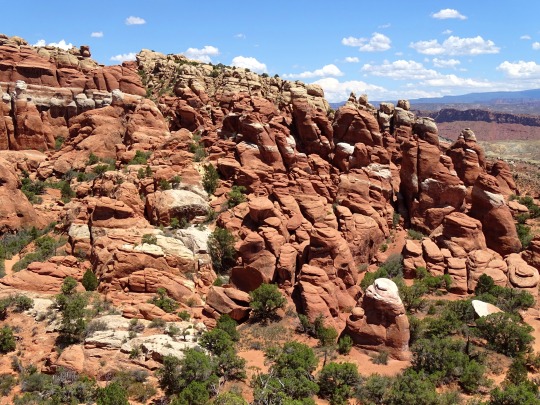


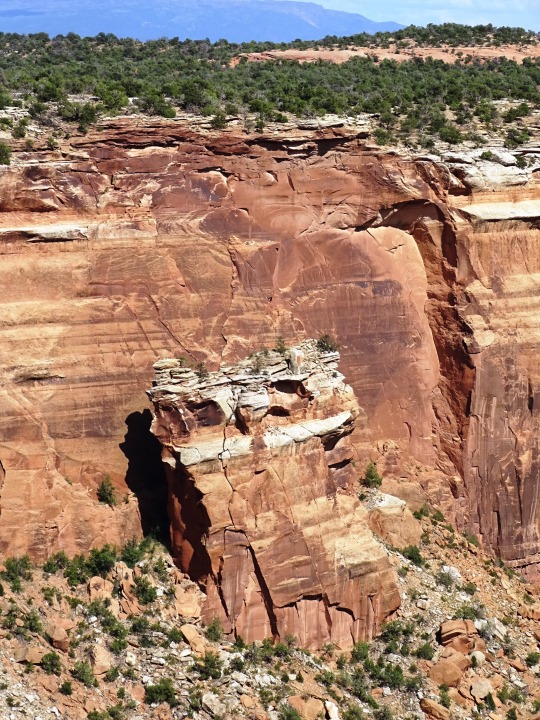




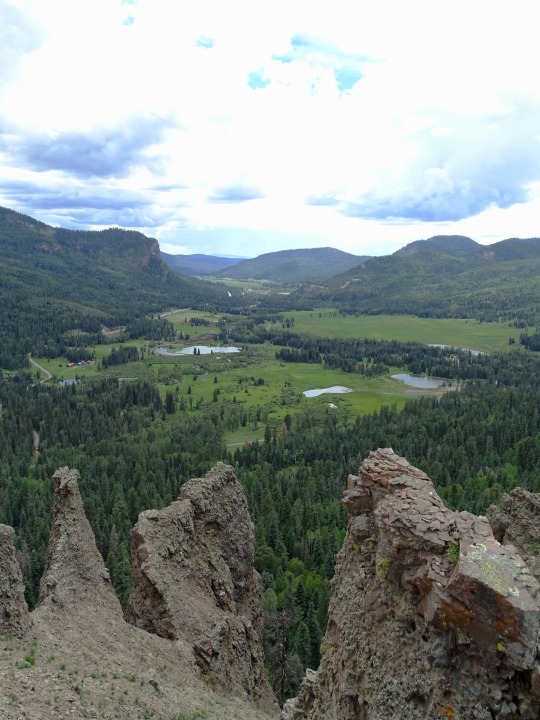



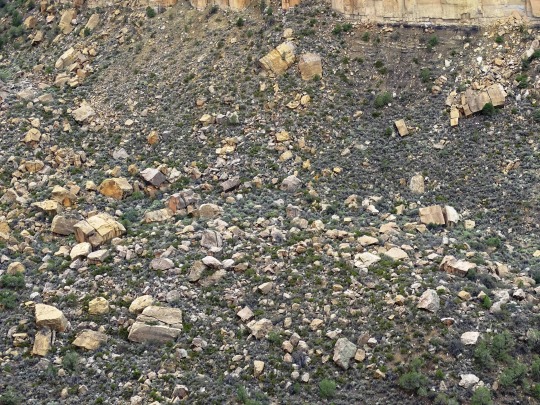

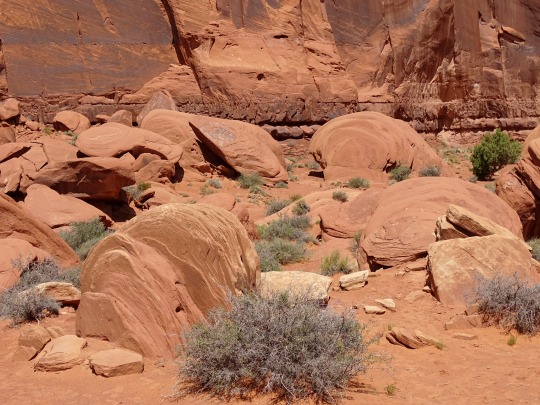
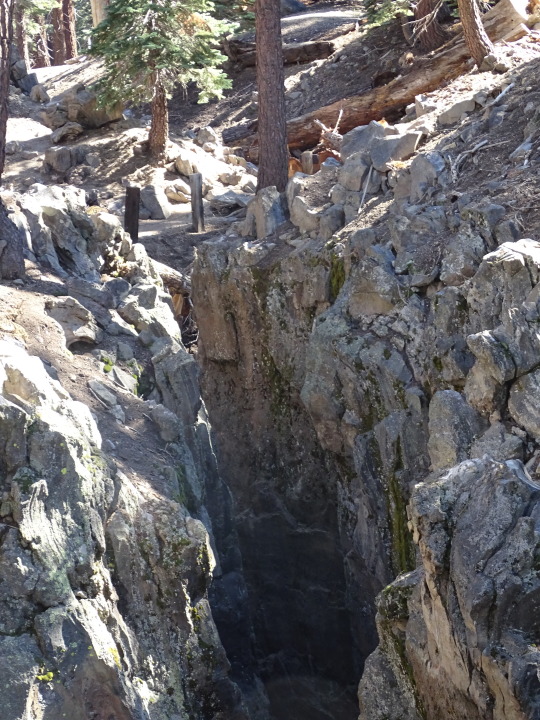



International Rock Day
The Rock or stone is a naturally occurring solid aggregate of one or more minerals or mineraloids. For example, the common rock granite is a combination of the quartz, feldspar and biotite minerals. The Earth’s outer solid layer, the lithosphere, is made of rock. Rocks have been used by mankind throughout history. From the Stone Age, rocks have been used for tools. The minerals and metals found in rocks have been essential to human civilization.
Learn about International Rock Day
International Rock Day has been created so that people all around the world can learn more about rocks. It’s not about rock and roll music; it’s all about the stone variety! After all, rocks play a big role in the environment, and they have been used by humans for many purposes over the years.
Three major groups of rocks are defined: igneous, sedimentary, and metamorphic. The scientific study of rocks is called petrology, which is an essential component of geology. At a granular level, rocks are composed of grains of minerals, which, in turn, are homogeneous solids formed from a chemical compound that is arranged in an orderly manner.
The aggregate minerals forming the rock are held together by chemical bonds. The types and abundance of minerals in a rock are determined by the manner in which the rock was formed. Many rocks contain silica (SiO2); a compound of silicon and oxygen that forms 74.3% of the Earth’s crust. This material forms crystals with other compounds in the rock. The proportion of silica in rocks and minerals is a major factor in determining their name and properties.
History of International Rock Day
International Rock Day is a day for celebrating this substance, which has been critical to the survival of mankind. Throughout history, rocks have been used. Since the Stone Age, rocks have been important for use as weapons and tools. The metals and minerals that have been found in rocks are critical to human civilization.
Rocks are geologically classified according to characteristics such as mineral and chemical composition, permeability, the texture of the constituent particles, and particle size. These physical properties are the end result of the processes that formed the rocks. Over the course of time, rocks can transform from one type into another, as described by the geological model called the rock cycle.
These events produce three general classes of rock: igneous, sedimentary, and metamorphic. The three classes of rocks are subdivided into many groups. However, there are no hard and fast boundaries between allied rocks. By increase or decrease in the proportions of their constituent minerals they pass by every gradation into one another, the distinctive structures also of one kind of rock may often be traced gradually merging into those of another.
Hence the definitions adopted in establishing rock nomenclature merely correspond to more or less arbitrary selected points in a continuously graduated series.
How to celebrate International Rock Day
There are a number of different ways that you can celebrate International Rock Day. One of the options is to do a bit of research on the different types of rocks that are available across the globe, as well as the different uses for these rocks. You can share this knowledge with your friends and family. Why not go on a rock hunt together? You can collect different types of rocks and learn about them. It is always fun to spend your time doing something different with the ones that you love.
Another way to celebrate International Rock Day is to enjoy an art project involving rocks. The best rocks for painting are those that can fit into the palm of your hand. The best surfaces for images and designs are rocks that have a flat surface and are nice and smooth.
You should also wash the surface of the rock and get rid of all of the dirt before you begin to paint. You will also find that acrylic paint works the best. You can use a variety of different types of brushes, depending on the sort of techniques that you want to attempt. When you are finished, seal the design. You can experiment with new colors and effects, creating different themes of rocks and exciting designs.
You can also spend some time learning about rocks on International Rock Day. After all, there is so much information about their formation uses, and much more. We will end this post with some fascinating facts to help you get started…
Some minerals and rocks appear so unusual that legends and myths have sprung up about them. For example, it was believed that snakestones were the remains of coiled snakes that had turned into stones.
Artists have used the colors inside some minerals and rocks for many years. For instance, cinnabar, which is the powder of a mineral rock, was used for art in the Middle Ages because of its brilliant red color.
Meteorites are pieces of metal or rock that hit the earth. Some have broken off to create asteroids, which are big rock chunks that orbit the sun in between Jupiter and Mars. If a big meteorite hits the Earth, it can result in a crater, which can change the surroundings of where it lands.
Source
#Dinosaur National Monument#travel#original photography#vacation#tourist attraction#landmark#landscape#countryside#USA#summer 2022#International Rock Day#InternationalRockDay#13 July#Utah#Colorado National Monument#Arches National Park#Yosemite National Park#Canyonlands National Park#Earthquake Fault#Mesa Verde National Park#Morro Bay#Page
23 notes
·
View notes
Text

In Colorado 154 Million Years ago, two male Diplodocus hallorum fight for territory while a female watches from a distance.
18 notes
·
View notes
Text
oh also next wednesday me, bf, and our two best friends will be flying to colorado again for a trip! so i probably won’t be very active next week and i prob won’t post straud either bc i don’t like to post my story when i’m not near my computer to be chatty about it ha. but i’m soooooo excited to go back, i’ve missed co so much!!!
#and it’s nice that this time it will just be our small group of friends#so we can do whatever we want without having to schedule around bf’s family’s schedule#i can’t wait to go on a hike!! and see the museum!!!!! SOOOO MANY DINOSAUR BONES IM SO EXCITED I FUCKING LOVE DINOSAUR BONES#and we are going to a bug sanctuary too :D and and korean bbq! i’ve never had that before i bet it will be so good#ik brie and vlad live in windenburg but in my head they live in colorado hahahahah. in the mnts! they’re mnt ppl!!!!#i hope we pass idaho springs bc that’s my favorite city in CO ❤️❤️❤️❤️
17 notes
·
View notes
Text

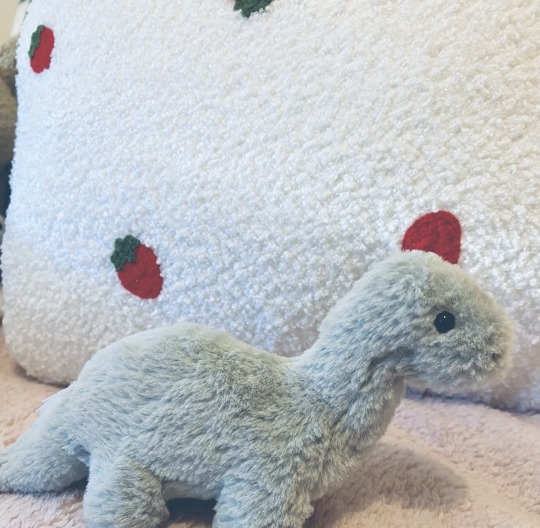
#dinosaur#dinosaurs#brachiosaurus#sauropod dinosaur#jurassic period#colorado#jellycat#jellycatcommunity#jellycat plush#plushcore#cutecore#dinocore#jurrasicpark#plushies#plush toy#stuffed toy#toy photography#cute#love#pastelcore#art#cute core#kidcore#wholesome#cute plush#cute and wholesome#toycore#dino#aww#smol
30 notes
·
View notes
Text
Sauropods of the Morrison Formation
Meet the Sauropods of the Jurassic era Morrison formation.

View On WordPress
#adobe photoshop#apatosaurus#artistatwork#Brachiosaurus#brontosaurus#camarasaurus#chart#Colorado#Commissions Open#Digital Art#dinosaur#Dinosaur Art#Diplodocus#Jurassic#Jurassic Period#largest#largest dinosaurs#long necks#Morrison Formation#Oklahoma#paleontology#Palo Art#prehistoric animals#prehistoric life#sauropod#sauropods#size chart#size comparison#supersaurus#Utah
2 notes
·
View notes
Text
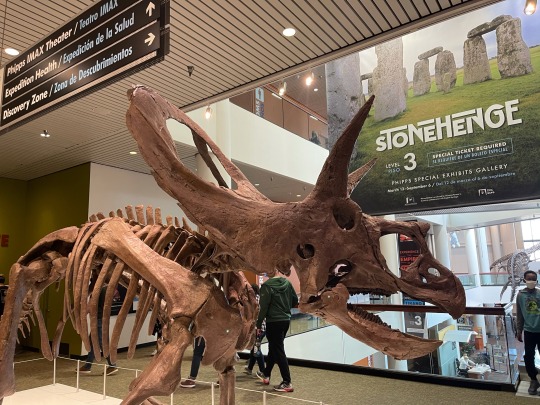

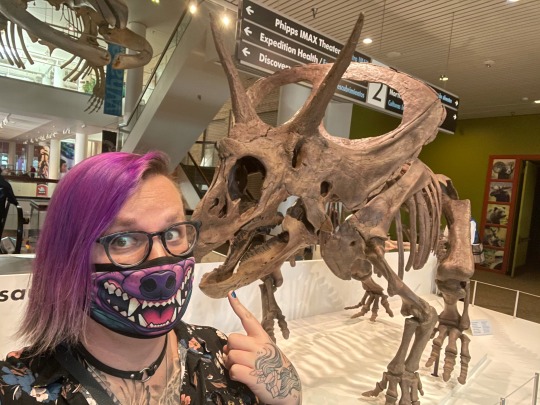
“Tiny” the Torosaurus at @denvermuseumns! I visited this dinosaur last year and I can’t wait for the science on them to come out. They might go a long way to confirming that Torosaurus and Triceratops were separate genera.
109 notes
·
View notes
Photo


Theropod footprints seen from below on Skyline Drive, Cañon City, Colorado
August 2021
#dinosaurs#paleontology#geology#nature#Colorado#photography#nature photography#original photography#photographers on tumblr#lensblr#my pics
65 notes
·
View notes
Text

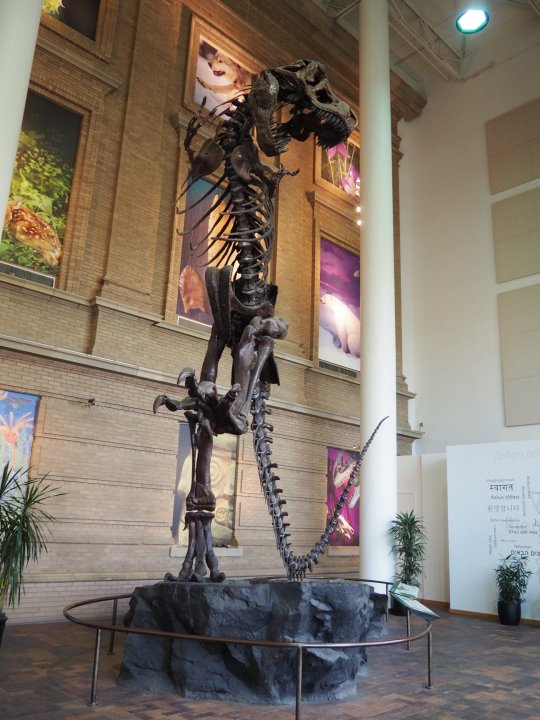

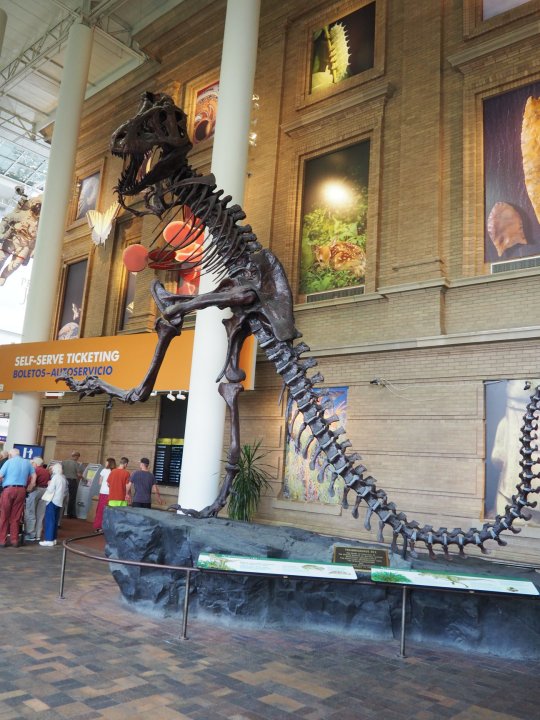
Finally got to see my favorite T. rex mount in person a few years ago.
#tyrannosaurus#tyrannosaurus rex#t. rex#dinosaurs#paleontology#bones#denver museum of nature and science#colorado#photography#i don't care how improbable or impossible the pose is#it looks fucking cool
11 notes
·
View notes
Text
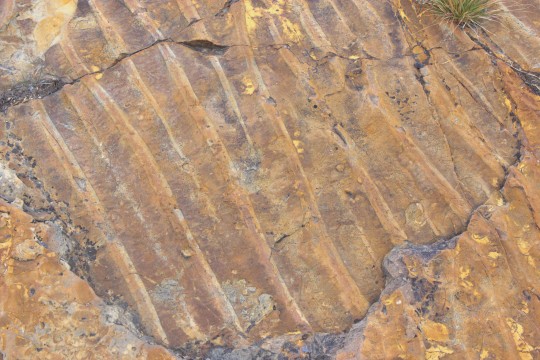

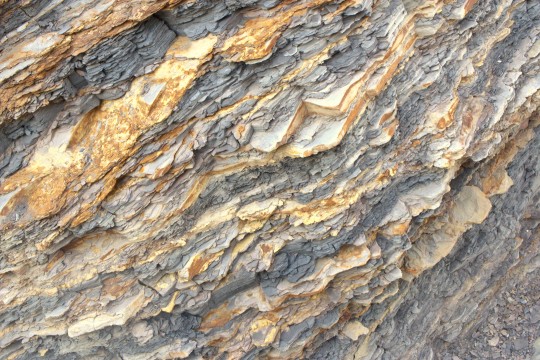

My favorite parts of the Morrison Formation in Morrison, Colorado. These tracks (top right) were first discovered during the Bone Wars of 1877, which is quite possible the most metal name for some nerd shit ever imagined.
#don't get me wrong i am also into the nerd shit#bone wars of 1877#just so extra and i love it#morrison formation#colorado#dinosaurs#dinosaur tracks#sedimentary rocks#rocks#i just like rocks what can i say#the dumbest shit in the weirdest places#traveling#travel#road trip#driving#photography#photo#national natural landmark#jurassic#these were all taken on my new 35mm lens :D#35mm
14 notes
·
View notes
Text
Monday's Musings: The Smallest Non-Avian Dinosaur
This is Fruitadens:

This is also a rough of a page from the dinosaur alphabet book I am making. Fruitadens may not have been the absolute smallest dinosaur, but it was definitely the smallest ornithischian dinosaur. It was found in the Brushy Basin Member of the Morrison Formation in the Fruita Paleontological Area of Fruita, Colorado. (Incidentally, this is the town my grandparents live in). It is a heterodontosaurid, meaning it has some weird teeth.
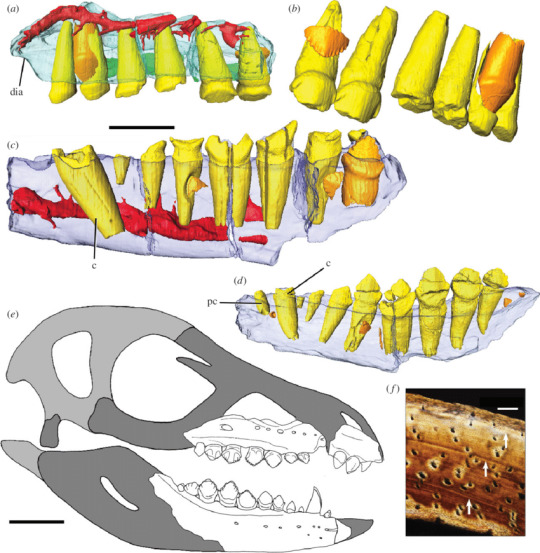
It had large canine-like teeth in the lower jaw with a corresponding gap for it to rest comfortably in when the mouth was closed. Unlike most of its relatives, it had a small peg-like tooth in front of the canine-like one.
At only 30 in (75cm) at most in length, these little guys were outliers living in a time of giants.

It was thought to be an omnivore and it had hollow bones like theropods that made it very light-weight so it could run incredibly fast.
I think it would be so fun to find something this tiny amongst all the giants we have at our site. The best way to do that? Have lots of hands out there moving rock with us! Want to be part of something amazing and life-changing? Block out a few weeks in July to come join us for our Field Paleontology Course at CNCC this summer! We'd love to see you there!
10 notes
·
View notes